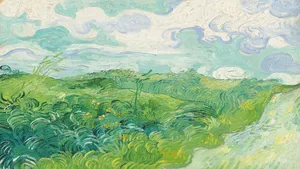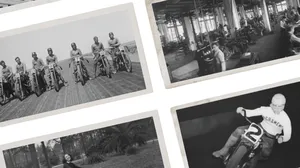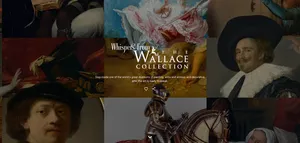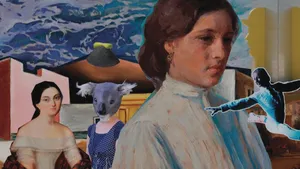Concrete and Clay: Archiving and celebrating the Barbican

The Barbican Centre is famous for three things:
1. Its stunning brutalist architecture
2. Its beautifully eclectic international programme
3. Everyone gets lost
On my way into work every morning, I walk along a yellow line on the Barbican Highwalks; the “Streets in the Sky” designed to separate walkers and traffic. “Follow the Yellow Brick Road,” joked an early documentary about this setup. Visitors have been getting lost around the Centre since we opened in 1982, and each generation of staff have found new ways of helping them find their way.
I Found the Barbican Badge, photographed by Max Colson

Getting lost has its merits, though. It can be a way of seeing things you hadn’t bargained for: the wildflower meadows on the highwalk by Barbican Station, the bits of Roman wall incorporated into the estate down past the Lakeside. Or, now, the restored architectural model down by our foyers, which launches this exciting collaboration with Google Arts & Culture.
The exhibition takes its title, “Concrete and Clay,” from the 1965 hit by beat combo Unit 4+2. They filmed their music video on the Barbican building site, smartly dressed and swaying along on what was, up until then, a 40-acre World War-II bombsite.
Working with Google Arts & Culture has enabled us to tell the story, warts and all, of how that bombsite turned into the Grade II-listed Brutalist masterpiece – home to 4000 residents and host to 2 million visitors a year – which it is today.
From carefully going through the extensive archive and digitising it for the first time, there are now more than 3,500 items and more than curated stories in this digital archive – enough to get lost in all over again. This beautiful roof plan, for starters.
Barbican Redevelopment General Layout Roof Plan (1966).

The numbers refer to the phases in which Chamberlin Powell & Bon’s architectural vision was carried out. It’s the key to our plans collection, first saved and organised by an intrepid group of residents in the estate.
There’s a sense of what draws people to live somewhere like the Barbican in the original sales brochures, like this one for Speed House.
Speed House: Sales Brochure - Page 1/6

The glass pyramid in the above image never got built on the Lakeside after all. I can’t help wishing that it had – nearly twenty years before I. M. Pei’s at the Louvre! But the idea survives in our famous conservatory, a wonderful bit of improvisation to hide the fly tower which drops scenery down to our theatre.
Like the rest of our collection of photographs by Peter Bloomfield, this contact sheet gives a sense of the creativity involved in the whole process, and the cast of the thousand engineers, carpenters, bricklayers, electricians, and here, crane operators that helped build this extraordinary place.
Moving Trees into the Conservatory by Peter Bloomfield

But what happened in that theatre on our opening night in March 1982? Here’s the Barbican Guide to tell you, and it happens to be a graphic design classic by Ken Briggs:
Barbican Diary - March 1982 by Ken Briggs

Contained within it, there’s the story of the people who now keep the building going: the countless brilliant artists who’ve performed here, the staff who keep the show on the road, and the audiences who keep coming back.
Now you’ve found us — enjoy getting lost again!
Keep exploring at goo.gle/barbican.






